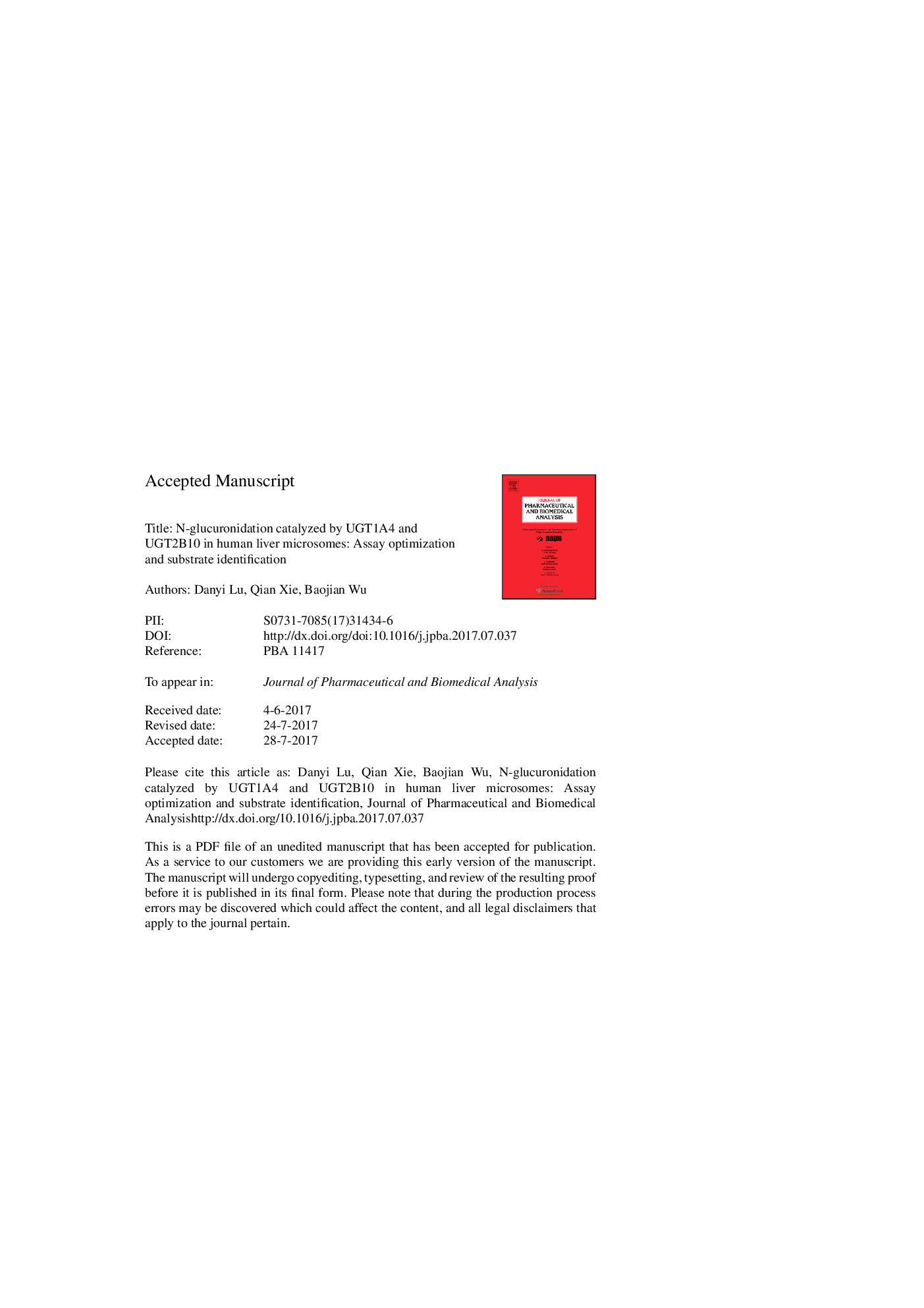| Article ID | Journal | Published Year | Pages | File Type |
|---|---|---|---|---|
| 5137790 | Journal of Pharmaceutical and Biomedical Analysis | 2017 | 35 Pages |
Abstract
N-glucuronidation is an important pathway for metabolism and disposition of tertiary amines in humans. This reaction is mainly catalyzed by the enzymes UGT1A4 and UGT2B10. However, the metabolic patterns of UGT1A4- and UGT2B10-mediated N-glucuronidation are not fully clear. In this study, we first optimized in vitro reaction conditions for N-glucuronidation by using specific substrates (i.e., trifluoperazine for UGT1A4, cotinine and amitriptyline for UGT2B10). Furthermore, we found that hepatic N-glucuronidation showed significant species differences. In addition, UGT1A4 and UGT2B10 were primarily responsible for N-glucuronidation of many tertiary amines, including asenapine, loxapine, clozapine, chlorpromazine, dothiepin, doxepin, mirtazapine, mianserin, chlorcyclizine, cyclizine, promethazine, cyclobenzaprine, imatinib, retrorsine, strychnine and brucine. In conclusion, this study provides an in vitro assay system for evaluating N-glucuronidation of amines. Also, UGT1A4- and UGT2B10-mediated N-glucuronidation might play significant roles in metabolism and detoxification of tertiary amines in humans.
Keywords
Related Topics
Physical Sciences and Engineering
Chemistry
Analytical Chemistry
Authors
Danyi Lu, Qian Xie, Baojian Wu,
